Collaborating on content ideas has transformed with digital tools, especially as remote and hybrid work environments become more common. These platforms help teams generate, organize, and refine ideas more effectively. Here’s a quick rundown of 10 tools designed for brainstorming and content planning:
- Miro: Visual collaboration with real-time editing, sticky notes, and templates. Great for mapping out campaigns and content audits.
- Team-GPT: AI-powered brainstorming with integrations like Notion and Google Drive for streamlined workflows.
- Gemini: Real-time idea sharing with a focus on research and specialized brainstorming.
- Claude: AI-driven insights for detailed content planning, offering up to 25 actionable ideas at once.
- ChatGPT: Versatile conversational AI for dynamic brainstorming and refining content strategies.
- HyperWrite: Combines AI writing suggestions with editing tools, ideal for collaborative projects.
- Jasper AI: Tailored for marketers, offering templates, brand voice training, and campaign planning.
- Copy.AI: Fast content generation with templates and workflow automation for quick brainstorming.
- Notion AI: Integrated workspace tool that generates ideas, organizes content, and supports collaboration.
- MindMeister: Visual mind mapping for organizing and connecting ideas with real-time collaboration.
Each tool offers unique features, from AI assistance to visual mapping, helping teams turn raw ideas into actionable plans. Choose based on your team’s workflow, budget, and content needs.
Software Tools You Need to Use to Organize Collaboration / Co-Creation Project Like Hackathon
1. Miro
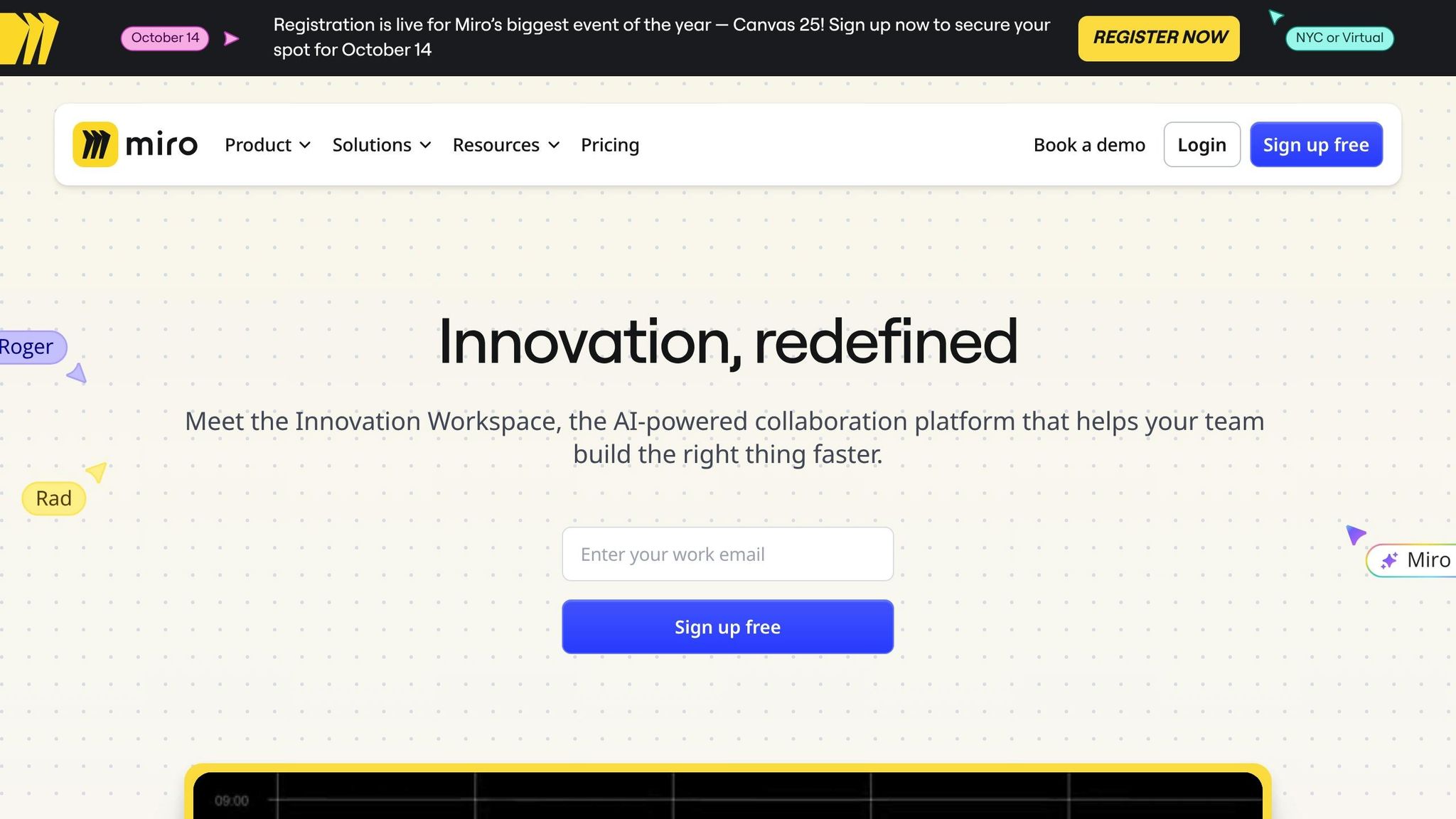
Miro is a platform designed for visual collaboration, helping teams brainstorm, map ideas, and organize content in a visually engaging way.
Real-time collaboration features
Miro stands out when teams work together in real time. You can literally watch cursors move across the screen as teammates add sticky notes, connect ideas, or rearrange elements on the board.
Its voting feature simplifies decision-making. For example, instead of debating which blog topics to tackle first, team members can vote by placing dots on their favorite ideas. This visual approach speeds up the process and keeps discussions focused.
The commenting tool allows for targeted feedback. For instance, if someone suggests a content series on marketing automation, you can click directly on that idea and add notes about the target audience or potential challenges. It keeps conversations organized and relevant.
Integration with other tools
Miro works seamlessly with tools like Slack, Google Drive, Asana, Trello, and Monday.com. These integrations make it easy to share boards or pull in important documents, allowing teams to transition smoothly from brainstorming to execution.
Use cases for content ideation
Miro offers a variety of ways to enhance content ideation, from mapping customer journeys to planning campaigns and auditing existing content.
For content pillar planning, Miro’s visual canvas makes it easier to organize themes. Teams can create sections for categories like educational, entertaining, and promotional content, filling each with specific ideas. This layout helps ensure a balanced approach to content creation.
When it comes to campaign brainstorming, Miro’s templates are a game-changer. Start with a central campaign objective, then branch out into formats, distribution channels, and messaging angles. The visual setup makes it simple to identify opportunities for repurposing content across platforms.
Miro is also a powerful tool for content audits. By creating visual inventories of existing content, teams can sort pieces by topic, performance, or publication date. This approach often highlights patterns or gaps that are easy to miss in a spreadsheet.
2. Team-GPT
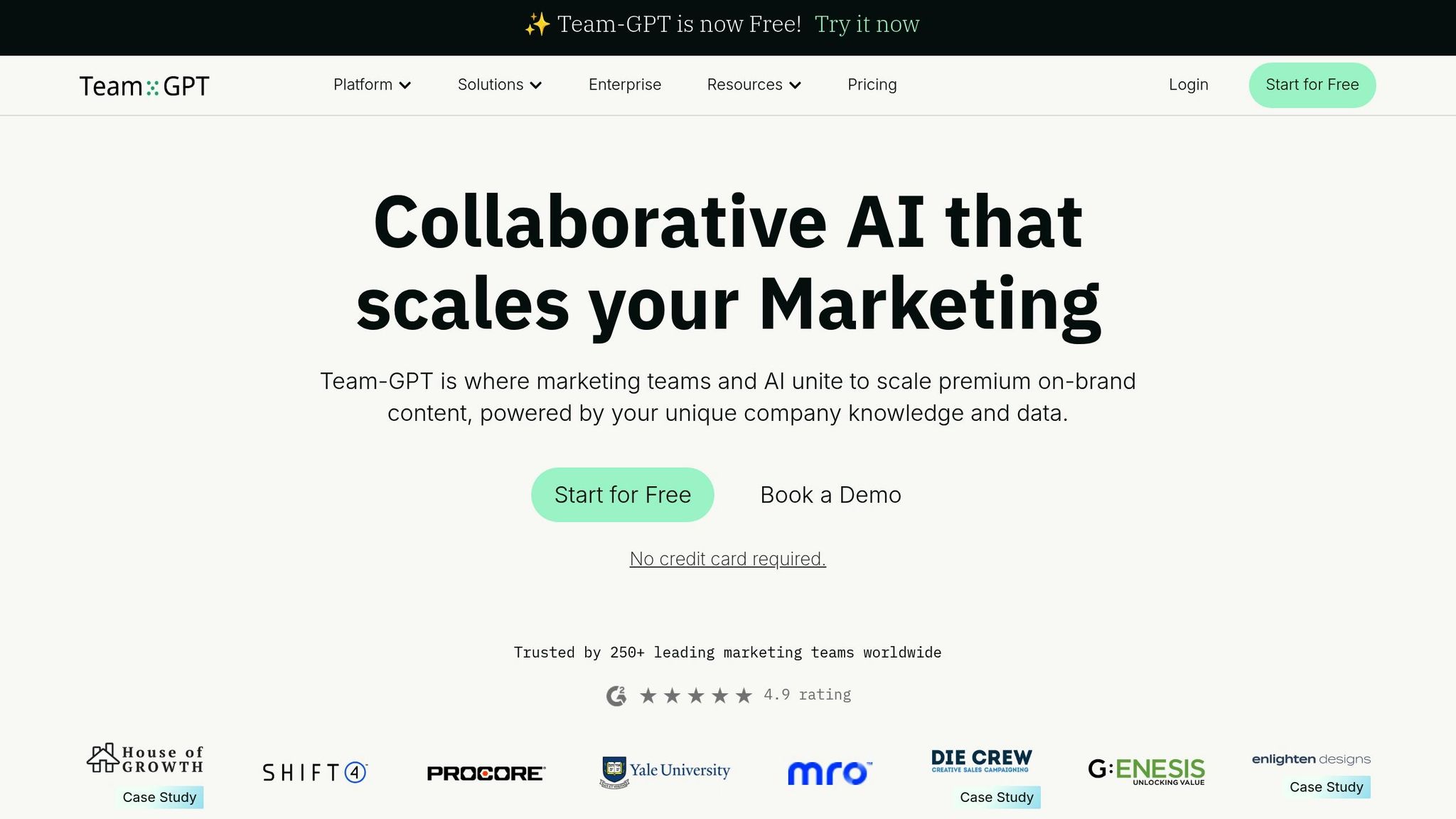
Team-GPT simplifies the way teams brainstorm and bring ideas to life, making the jump from concept to creation much smoother. What sets it apart is how effortlessly it connects with the tools teams already rely on.
Integration with Essential Tools
Team-GPT works hand-in-hand with popular platforms like Notion, SharePoint, and Google Drive. These integrations let teams pull vital marketing data directly into their brainstorming sessions. The result? Less time spent switching between tools and more time focusing on creative ideas.
Your entire Marketing AI workflow in One Collaborative Space | Team-GPT, 2025
3. Gemini
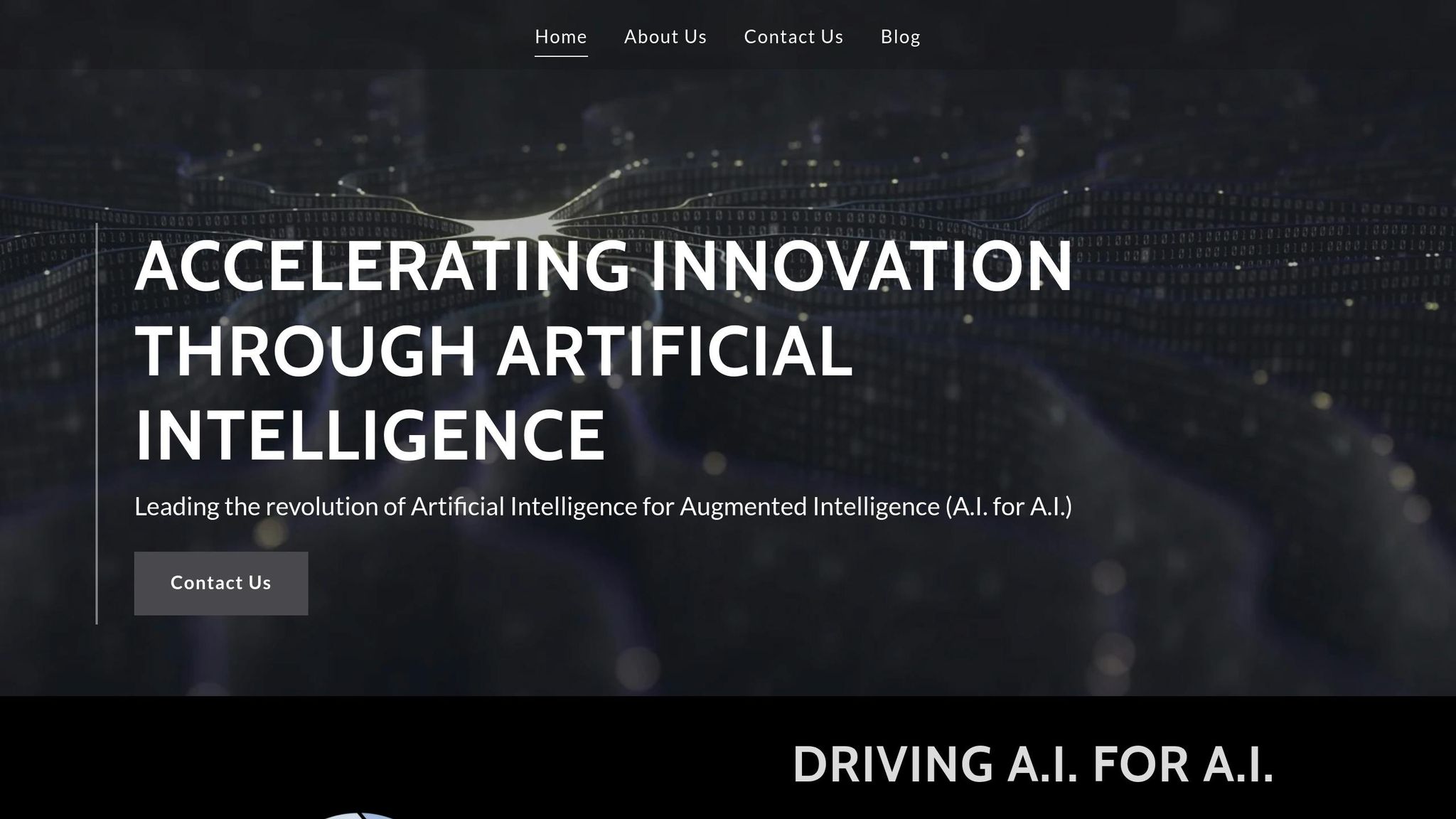
Gemini takes team brainstorming to the next level with its Canvas feature, allowing team members to contribute ideas simultaneously in real time. As everyone adds their input, the updates are visible instantly, creating a lively and interactive space for collaboration.
This seamless teamwork makes it easier to dive into more focused and specialized brainstorming tools down the line.
4. Claude
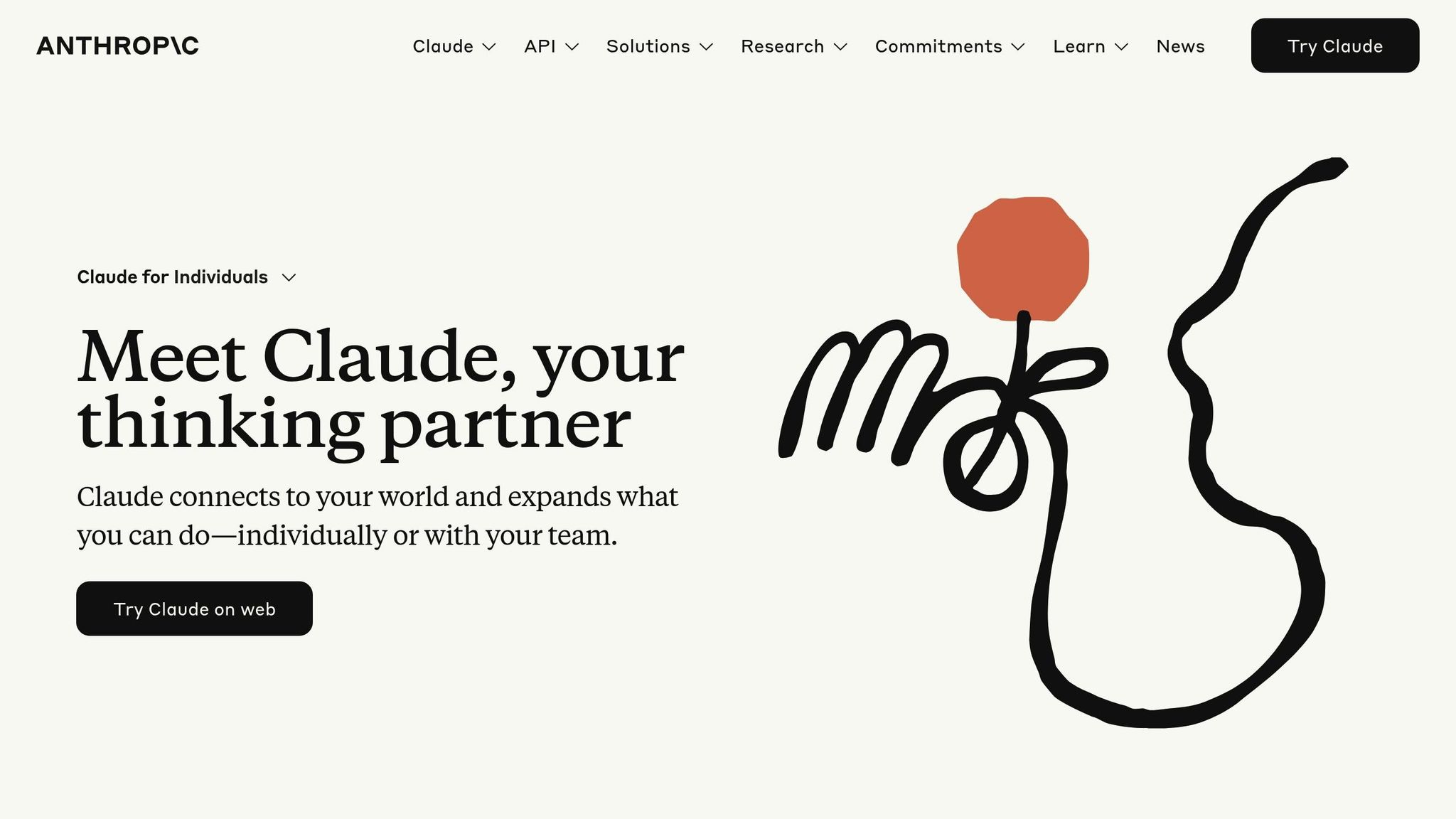
Claude stands out as a tool that transforms team brainstorming sessions, offering AI-driven insights to streamline content creation. It helps turn raw ideas into well-structured plans, making it easier for teams to develop impactful content.
AI-Powered Brainstorming Capabilities
Claude shines when it comes to generating detailed content ideas with fresh perspectives. Instead of just providing basic lists, it delivers hooks, value propositions, and multiple variations for each idea.
With its Creative Catalyst Framework, Claude can produce up to 25 actionable ideas at a time. Each idea comes with a clear topic, a unique angle, and a defined benefit for the reader, provided the AI is given details about the target audience and previous content.
It’s particularly effective at expanding single ideas into multiple variations or even an entire series of posts, giving content teams plenty of options to work with.
Use Cases for Content Ideation
Claude proves especially useful for blog content creation. It assists teams by generating topic ideas, outlining key points, and even drafting full articles. Beyond that, it can recommend which topics are better suited for long-form pieces versus shorter, snappier posts. It also helps organize topics in an order that maximizes impact and suggests ways to adapt ideas for different platforms.
Whether you’re planning an in-depth article or brainstorming quick tips, Claude helps teams quickly develop and refine their ideas.
Integration with Other Tools
Claude's Artifacts feature makes collaboration easier by displaying detailed content outputs in separate windows. This setup allows teams to review extensive brainstorming results and integrate AI-generated ideas directly into their workflows.
To get the most out of Claude, teams should provide clear briefs that include details about the target audience, the desired tone, and key points to address. A structured approach like this ensures the AI produces content ideas that align with team goals and audience expectations.
5. ChatGPT
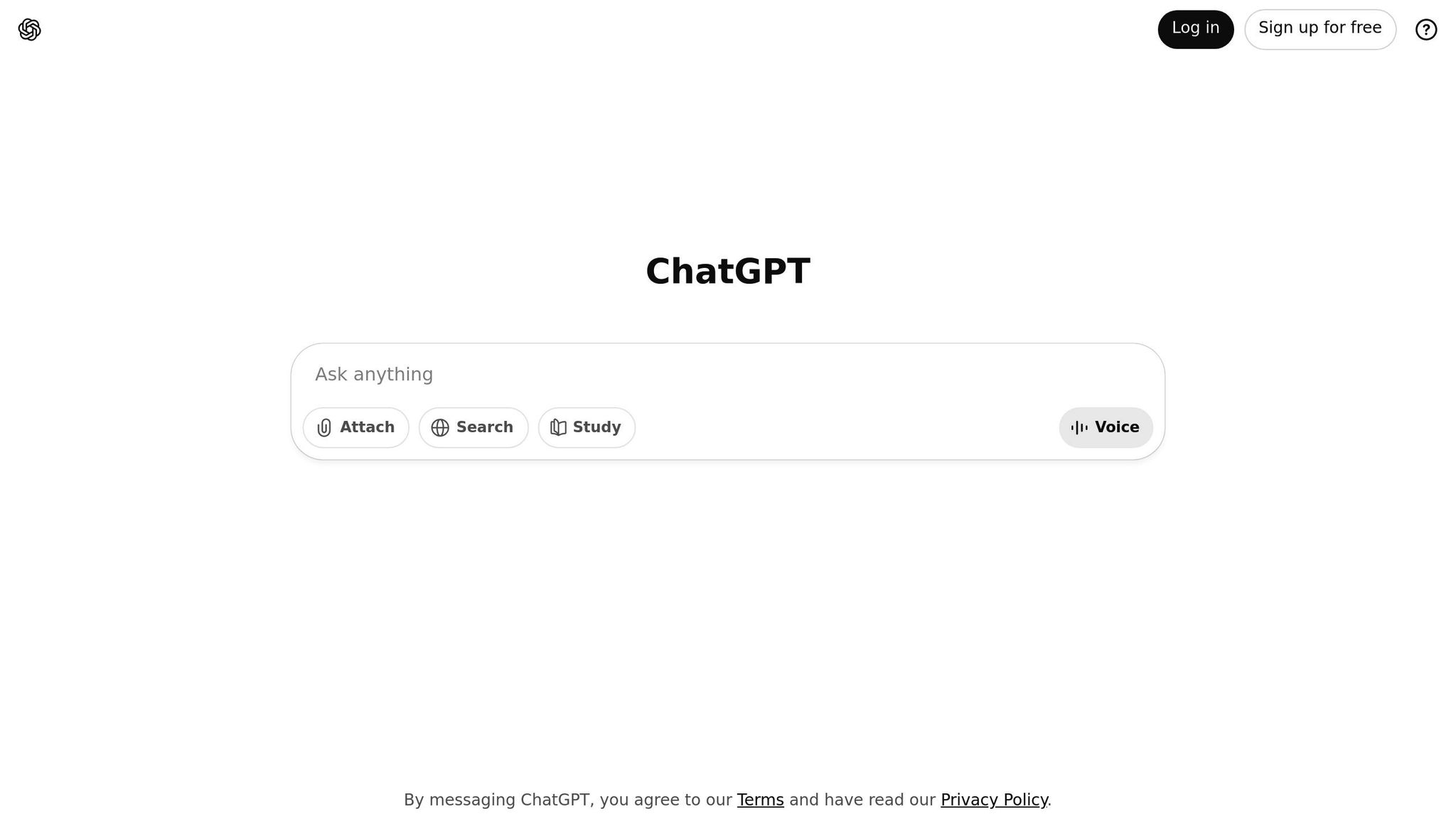
ChatGPT has become a go-to tool for content teams, offering a conversational style that makes brainstorming feel intuitive. Its knack for understanding context helps teams craft well-rounded content strategies. When used alongside tools like Miro or Claude, it brings an interactive and collaborative edge to the creative process.
AI-Powered Brainstorming Capabilities
ChatGPT shines when it comes to generating a variety of content ideas through dynamic exchanges. Teams can kick things off with a broad topic and refine their focus by asking follow-up questions, exploring alternative angles, or diving into specific subtopics. This iterative process often uncovers creative directions that traditional brainstorming might miss.
One of its standout features is its ability to adapt suggestions in real time. For instance, if a team asks for ideas to be "more actionable" or "geared toward beginners", ChatGPT adjusts its responses to meet those needs. This adaptability lets teams explore a range of content formats, including how-to guides, listicles, case studies, and opinion pieces.
It’s also a powerful tool for expanding single ideas into larger content series. A prompt like "email marketing tips" can evolve into a multi-part series covering strategy, automation, design, and analytics, with each segment tailored to specific audiences. This dynamic interaction makes it an invaluable asset for content planning.
Use Cases for Content Ideation
Content teams leverage ChatGPT for brainstorming campaigns, blog topics, and social media content. It’s particularly effective for crafting blog post titles, generating ideas for social posts, and coming up with email newsletter topics. By reimagining AI-generated ideas from different angles, teams can repurpose content across various platforms.
This tool also excels at creating audience-specific content. By sharing details about target demographics, pain points, and preferences, teams can generate ideas that resonate more deeply with their audience. This tailored approach ensures content feels relevant and engaging.
Additionally, ChatGPT helps identify content gaps by suggesting new topics that align with or build upon existing strategies.
Integration with Other Tools
While ChatGPT doesn’t have built-in integrations, teams often transfer ideas into platforms like Trello, Asana, or Notion for organization and collaboration. Many teams archive ChatGPT sessions by content category to use as a reference for future projects.
Some also pair ChatGPT with content calendar tools. For example, they might use it to brainstorm monthly themes and break them down into specific post ideas. These ideas can then be organized into editorial calendars and assigned to team members for development.
This simple workflow makes it easy to incorporate ChatGPT into agile content creation processes.
6. HyperWrite
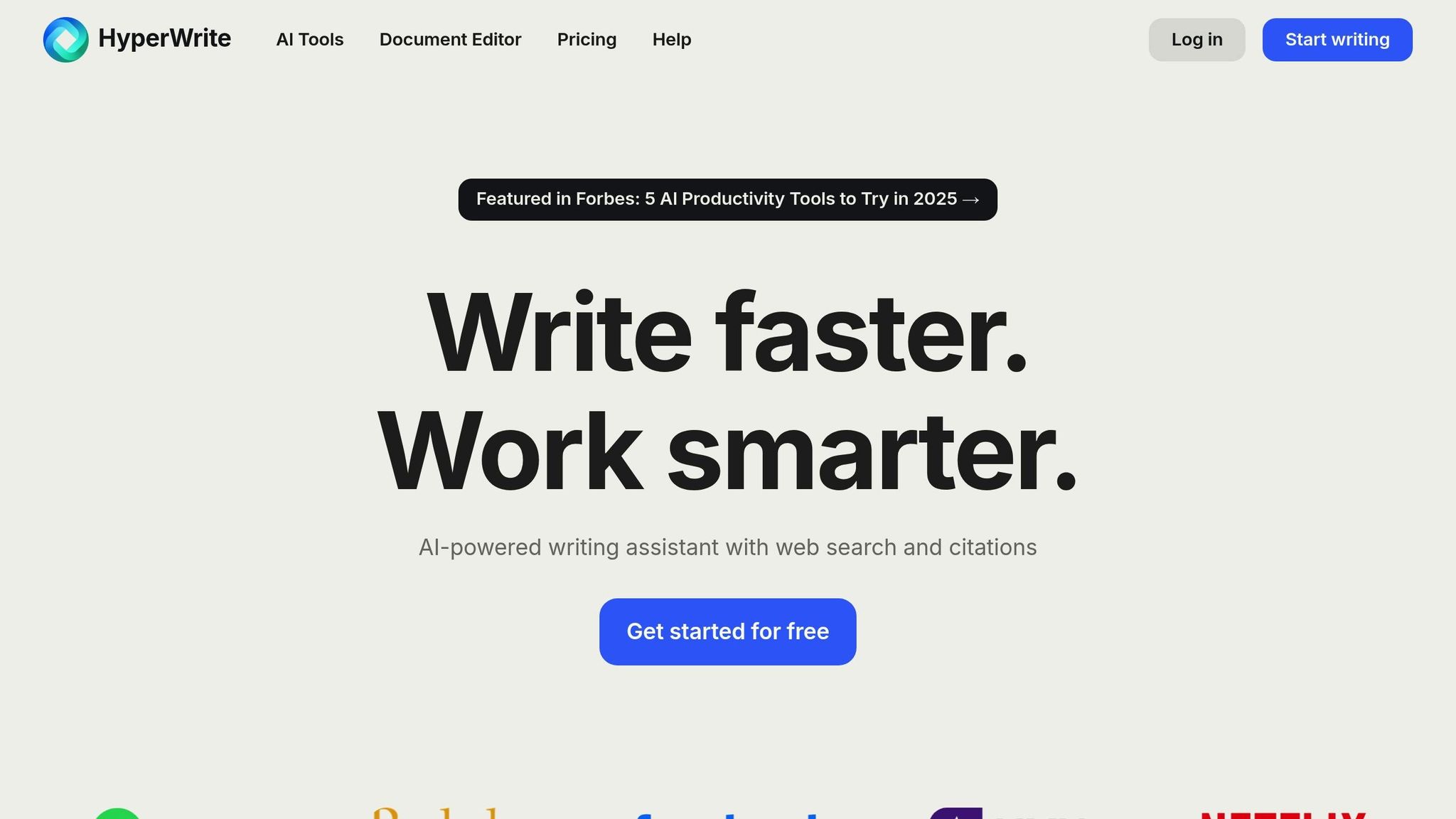
HyperWrite works seamlessly with widely-used content creation platforms, bringing writing, editing, and publishing together in one convenient space. It provides real-time AI suggestions and user-friendly editing tools, enabling teams to shape and improve their ideas as they write. This makes it especially useful for collaborative projects.
Similar to other tools, HyperWrite keeps workflows uninterrupted, allowing for an easy transition from brainstorming to final content production.
sbb-itb-a84ebc4
7. Jasper AI
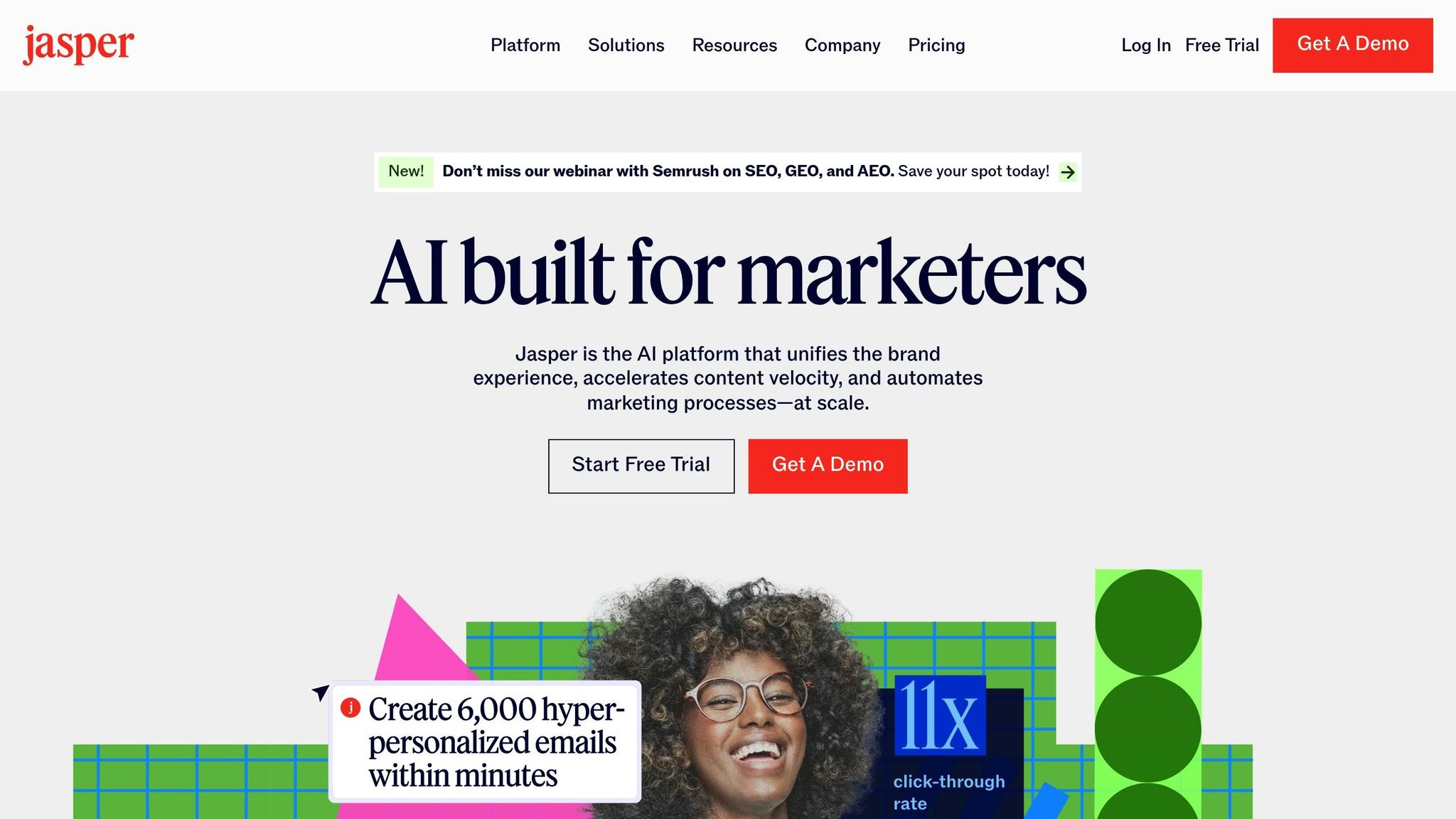
Jasper AI helps teams transform scattered ideas into well-organized content strategies. Tailored for marketers, this platform supports planning, creating, and collaborating on content, blending advanced AI features with tools that streamline team-based brainstorming sessions.
AI-Powered Brainstorming Features
Jasper AI combines cutting-edge models like GPT-3 and GPT-4 with writing tools to overcome writer’s block and simplify repetitive tasks. Its Jasper Chat and specialized Jasper Agents (focused on optimization, personalization, and research) deliver customized content suggestions to spark creativity.
With over 50 templates for content ideas, including "Blog Post Topic Ideas", "Video Topic Ideas", and even "Ridiculous Marketing Ideas", Jasper AI encourages teams to think creatively. For those who prefer more flexibility, the "start from scratch" option allows for complete creative freedom.
Brand IQ ensures all content aligns with your brand’s voice, style, and guidelines. This feature keeps teams on track, avoiding ideas that stray from the brand’s identity. Together, these tools create a strong foundation for seamless collaboration.
Real-Time Collaboration Tools
Jasper AI goes beyond AI-powered brainstorming by offering a collaborative workspace. Jasper Canvas serves as a digital hub where marketers can plan and execute campaigns with ease. Updates are synced instantly, making it easier for teams to stay aligned across all channels.
The platform also includes document sharing features, enabling business teams to share entire projects or specific assets with selected members. Documents can be kept private, shared with the entire workspace, or made accessible to specific individuals, depending on project needs.
Integration with Other Tools
Jasper AI integrates seamlessly with existing marketing tools through its library of connectors. This allows teams to pull in data or send outputs to other platforms they already use. For more tailored workflows, Jasper offers a flexible API to build custom end-to-end solutions.
Practical Applications for Content Ideation
Marketers frequently use Jasper AI’s "Blog Post Topic Ideas" template to create SEO-friendly headlines. The platform also provides tailored templates for blogs, videos, and social media, ensuring a consistent brand voice and high-quality output.
Whether teams are developing large-scale marketing campaigns or brainstorming quick ideas for social media, Jasper AI simplifies the process of generating fresh, engaging content in no time.
8. Copy.AI
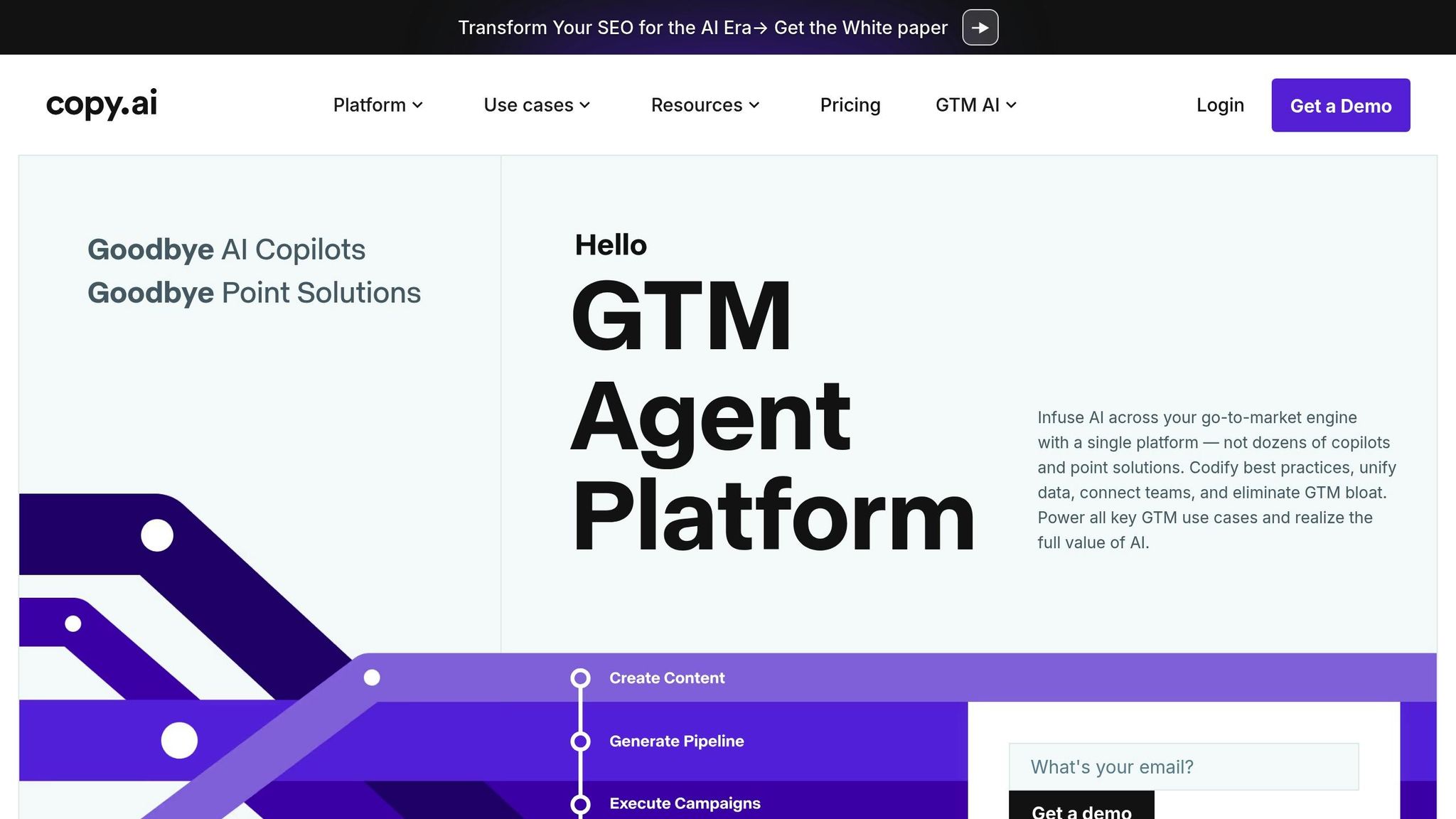
Copy.AI connects with a wide range of marketing and productivity tools, making it easier for teams to streamline their content creation process. By fitting smoothly into existing workflows, it helps transform brainstorming sessions into actionable content strategies. Its functionality is comparable to tools like Miro and Jasper AI, offering a seamless way to organize and develop fresh ideas efficiently.
9. Notion AI

Notion AI transforms your workspace into a hub for brainstorming, making it easier for teams to generate, organize, and refine content ideas. By working directly within your existing setup, it simplifies the process of moving from initial concepts to a solid content strategy.
AI-Powered Brainstorming
Notion AI’s assistant is great at offering multiple content ideas based on a single prompt. Whether you need blog post outlines, ideas for social media campaigns, or email marketing sequences, it delivers structured suggestions that your team can tweak and expand. One of its standout features is brainstorming content series - it can take a single topic and spin it into several related angles, helping you build a cohesive content calendar.
What makes Notion AI especially useful is its ability to retain context. Since it works within your workspace, it can pull from previous projects, brand guidelines, and existing content to ensure new ideas align with your overall strategy.
This seamless idea generation naturally supports better team collaboration.
Collaboration in Real Time
Notion AI makes teamwork easier with shared pages and databases where updates, comments, and mentions are reflected instantly. Threaded comments keep discussions organized, and everyone stays on the same page - literally.
The template system is another highlight. Teams can create reusable formats for brainstorming sessions, ensuring every meeting follows a consistent structure while still leaving space for creativity.
Integration with Other Tools
Notion AI connects easily with content management systems, social media schedulers, and project management tools. Its database capabilities mean brainstormed ideas can be automatically sorted by type, publication date, or campaign theme, keeping everything organized and ready to act on.
Practical Use Cases
Notion AI’s features make it a go-to for marketing teams during quarterly planning. Teams can collaboratively generate, filter, and prioritize topics, while the AI analyzes past high-performing content to suggest similar ideas, helping replicate success without becoming repetitive.
Content creators also use Notion AI for cross-platform adaptation. A single idea generated during a brainstorming session can evolve into multiple formats - blog posts, social media updates, email campaigns, or video scripts - all managed within interconnected Notion pages. This makes it easier to maintain consistency across platforms while maximizing the value of each idea.
10. MindMeister

MindMeister stands out among brainstorming tools by focusing on visual mapping to help teams organize and connect ideas in a dynamic way. Instead of sticking to linear formats, it allows for non-linear thinking, enabling content teams to explore connections between concepts that might otherwise go unnoticed.
Real-time Collaboration Features
With MindMeister, collaboration happens in real time. Changes made by any team member are instantly visible across all devices, ensuring everyone stays on the same page.
The platform includes an integrated chat feature for in-editor discussions, making communication seamless while brainstorming. Its "Brainstorm Mode" takes mind mapping to the next level, encouraging focused ideation by allowing participants to add comments and reactions directly to specific topics. Teams can also use the built-in commenting and voting system to provide feedback or run quick polls without disrupting the map's structure. For added transparency, the History Mode tracks every contribution, using timestamps and color-coding to show who added what and when.
Integration with Other Tools
MindMeister works smoothly with a range of productivity tools to enhance workflows. Its integration with MeisterTask allows users to convert map topics into actionable tasks, complete with assignments, deadlines, and progress tracking.
"Use MindMeister + MeisterTask, alongside other powerful integrations, to transform ideas into actionable tasks and manage workflows end‑to‑end." - MindMeister
The platform also integrates with Google Workspace, enabling users to create and manage mind maps directly from Google Drive, sync their maps, and attach files stored in Drive. For teams using Microsoft Teams, MindMeister fits right into the platform, allowing mind mapping within the daily workflow. Additionally, through MeisterTask's connection with Zapier, teams can automate tasks and link MindMeister to thousands of other apps [13].
These integrations make MindMeister a versatile tool, bridging the gap between brainstorming and task execution.
Use Cases for Content Ideation
MindMeister’s features make it an excellent choice for various content planning scenarios. For example, content marketing teams often use it for quarterly planning. Its visual format helps identify content gaps and opportunities across multiple channels, while the unlimited topics feature allows for unrestricted brainstorming.
The platform’s collaborative agenda feature is another highlight. Teams can add meeting minutes directly to map topics, turning the mind map into a shared knowledge hub for structured planning sessions. This functionality is particularly useful for organizing content series. Starting with a central theme, teams can branch out into related subtopics, ensuring all angles are covered while maintaining logical connections between ideas.
Briana H., a user of the platform, commends its ease of use and robust mapping capabilities.
MindMeister offers a free plan that supports up to three mind maps with unlimited collaborators, making it a budget-friendly option for smaller teams. For those needing more, paid plans start at $7.50 per month, offering unlimited mind maps and additional features [13].
Tool Comparison Chart
The chart below simplifies the main features of various tools designed for collaborative content brainstorming. Picking the right tool hinges on your team's priorities, budget, and workflow. This comparison outlines the strengths and drawbacks of each tool to help guide your choice.
| Tool Name | Best For | Key Features | Integration Options | Pros | Cons |
|---|---|---|---|---|---|
| Miro | Visual collaboration and whiteboarding | Infinite canvas, templates, sticky notes, real-time editing | Slack, Microsoft Teams, Google Workspace, Jira, Asana | Easy-to-use interface, rich template options, great for visual teamwork | Can get messy with large teams; advanced features take time to learn |
| Team-GPT | AI-powered team brainstorming | Shared AI chats, team workspaces, prompt libraries | API integrations, custom workflows | Encourages collaborative AI sessions, builds shared knowledge | Requires AI familiarity; potential over-reliance on AI suggestions |
| Gemini | Research-heavy content planning | Advanced reasoning, multimodal inputs, real-time updates | Google Workspace, third-party apps via API | Strong for analysis and access to current information | Limited team collaboration features; Google account might be required |
| Claude | Long-form content ideation | Large context window, document analysis, ethical AI responses | API integrations, custom applications | Great for detailed analysis with safety-focused outputs | No built-in collaboration tools; free tier has usage limits |
| ChatGPT | General content brainstorming | Conversational AI, custom GPTs, plugin ecosystem | Zapier, Microsoft Office, various apps via plugins | Highly versatile, large community, wide-ranging integrations | May provide outdated info; requires thorough fact-checking |
| HyperWrite | Writing-focused brainstorming | AI writing assistant, research tools, citation features | Chrome extension, web-based integrations | Excellent for writing support and research | Limited to text-based collaboration; lacks visual tools |
| Jasper AI | Marketing content ideation | Brand voice training, campaign planning, content templates | Surfer SEO, Grammarly, Google Docs, social media | Tailored for marketing, ensures brand consistency | Higher cost; learning curve for advanced use |
| Copy.AI | Quick content generation | Templates, workflow automation, team collaboration | Zapier, social media platforms, CRM systems | Quick output with an easy-to-use interface | Customization is limited; output may feel generic |
| Notion AI | Integrated workspace brainstorming | Database integration, page generation, content enhancement | Over 50 integrations, including Slack, Google Drive, Figma | Combines workspace tools with flexible AI features | AI tools need a separate subscription; features can be overwhelming |
| MindMeister | Visual mind mapping | Real-time collaboration, brainstorm mode, history tracking | MeisterTask, Google Workspace, Microsoft Teams, Zapier | Great for visual organization and teamwork | Sticks to mind mapping; lacks broader AI functionalities |
Some tools, like Miro and MindMeister, offer free tiers that are ideal for smaller teams. Others, such as Jasper AI, cater to enterprise users with more advanced needs. Tools like ChatGPT and Claude provide subscription plans that unlock additional features.
For those just starting out, Miro and MindMeister are user-friendly options. Teams focused on content marketing may lean toward Jasper AI or Notion AI for their seamless integration into existing workflows. If your project requires intensive research, Gemini or Claude are excellent choices due to their strong analytical capabilities.
Integrations also play a big role. Tools like Gemini are a natural fit for teams using Google Workspace, while Miro and MindMeister work well for organizations relying on Microsoft Teams. For full details on integrations, refer back to the individual tool descriptions.
Conclusion
The tools we've explored each bring order to the chaos of collaborative content brainstorming, turning scattered ideas into structured and actionable plans.
Every tool shines in its own way. For example, Google Workspace users will appreciate Gemini's smooth integration, while marketing teams might lean toward Jasper AI for its ability to refine and maintain a consistent brand voice. If your team struggles with disorganized brainstorming, MindMeister's mind mapping can help bring clarity, while AI-powered solutions like ChatGPT or Claude are perfect for tackling writer's block.
Budget is another important factor to weigh. Smaller teams might start with free options like Miro or MindMeister, testing the waters before committing to premium features. On the other hand, larger organizations with more complex needs may find the efficiency gains from tools like Jasper AI or Notion AI well worth the investment.
Rather than adopting every tool at once, focus on one or two that directly address your team’s specific challenges. Teams often see better results by mastering a single platform instead of juggling multiple tools. Whether your team thrives on AI-driven brainstorming or visual collaboration boards, the key is finding what fits your workflow.
The ultimate aim is to foster an environment where your team’s best ideas can flourish. Dive into these tools and see how they can refine your content strategy and elevate your creative process.
FAQs
What’s the best way to pick a brainstorming tool that fits my team’s content creation needs?
When choosing the best brainstorming tool for your team, start by defining your content goals. Are you aiming to craft engaging social media posts, improve SEO strategies, or map out detailed long-form articles? Next, consider how your team works together. Does your team thrive on real-time collaboration, need visual aids to organize ideas, or require tools that help manage and prioritize tasks? Lastly, pick a tool that streamlines communication and simplifies your workflow, so the team can channel their energy into creativity and productivity. The right choice will seamlessly align with your needs and make the brainstorming process more efficient and enjoyable.
How do AI tools like Claude and ChatGPT differ when it comes to brainstorming content ideas?
AI tools like Claude and ChatGPT take different approaches to content ideation, each catering to distinct needs. Claude, created by Anthropic, shines when it comes to producing structured, detailed, and long-form content. This makes it a solid choice for tasks like meticulous planning or deep brainstorming sessions.
Meanwhile, ChatGPT stands out for its speed, adaptability, and conversational style. It's perfect for generating quick, creative, and varied ideas, making it a go-to for fast-paced brainstorming or more dynamic discussions.
If your team prioritizes well-organized and comprehensive ideas, Claude might align better with your goals. But if you’re after fast, flexible input for diverse projects, ChatGPT could be the better fit. Ultimately, both tools can boost collaboration - your choice depends on what works best for your specific needs and workflow.
Do these brainstorming tools work with platforms like Slack or Trello that we already use?
Many brainstorming tools are built to work effortlessly with popular platforms like Slack and Trello. For instance, you can link Slack and Trello to share boards, convert Slack conversations into Trello cards, or attach relevant discussions directly to tasks. These connections make it easier for teams to collaborate and manage their workflows without switching between tools.
Using these integrations can boost productivity and foster better communication within your team.


